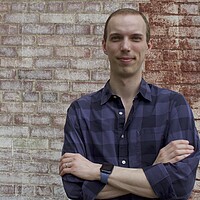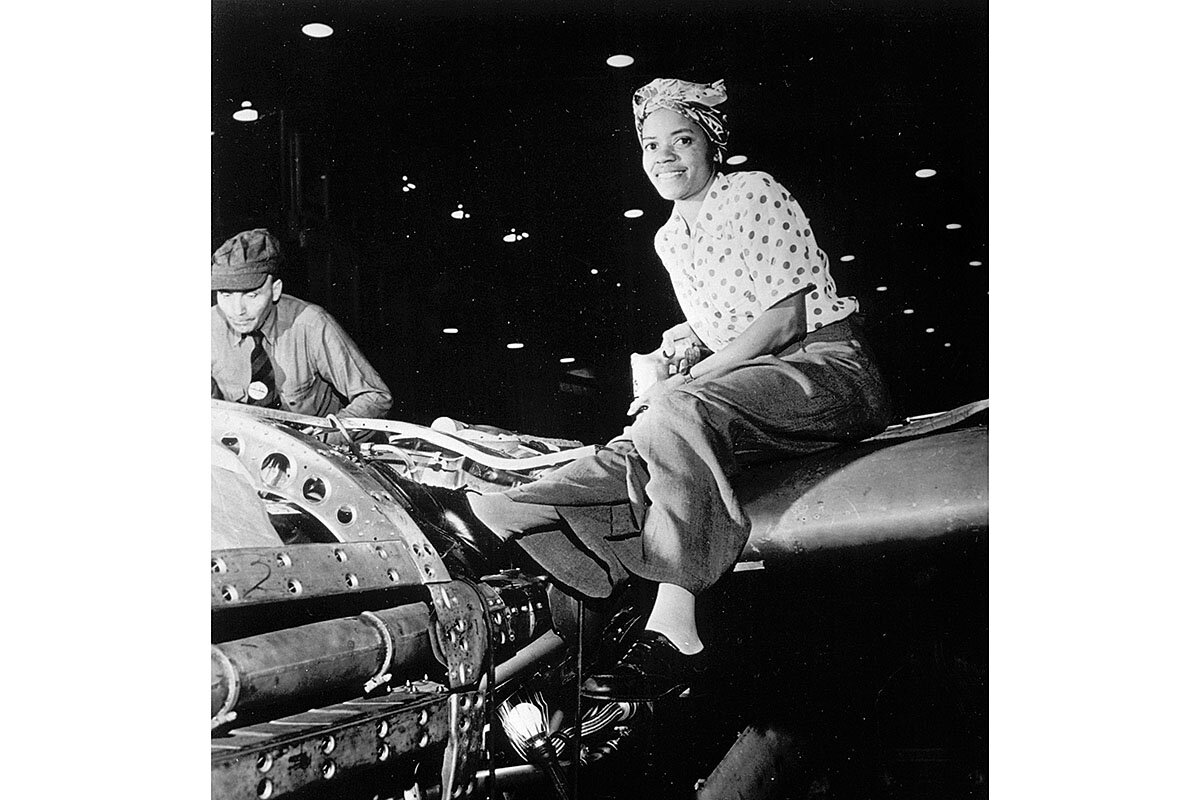For ‘victory over the enemy,’ can Americans unite under pandemic?
Loading...
Barb Hammon arrives at work a bit before her 7 a.m. shift each morning. She makes coffee, reads reports, and dons her daily hospital gown, face shield, mask, and two pairs of gloves. She spends the next exhausting 12 1/2 hours at a job she doesn’t need to work.
Ms. Hammon is a critical care nurse in Kalamazoo, Michigan. After 24 years in her hospital unit, she had planned to retire in late May. Then came the coronavirus outbreak, and Ms. Hammon decided she wasn’t going anywhere.
Postponing her retirement to July 2, she has spent the past few months on the pandemic front lines. Ms. Hammon says two things make her stay: love for her coworkers and a desire to play her part.
Why We Wrote This
Is yesterday’s Rosie the Riveter today’s Rosie the Mask-maker? As the pandemic persists, some scholars wonder what will spur more Americans toward collective sacrifice – just as the nation managed during World War II.
“It’s part of that collective spirit,” she says. “People want to be part of this [response to the pandemic]. They want to do more than just stay home. They want to feel that they’re contributing.”
Editor’s note: As a public service, all our coronavirus coverage is free. No paywall.
The United States has lost over 110,000 lives to COVID-19 – more Americans than the Korean War and Vietnam War combined. Legions of people like Ms. Hammon have moved to help their neighbors during the pandemic, which leaders from Democratic New York Gov. Andrew Cuomo to President Donald Trump have called America’s greatest challenge since it entered World War II. Widespread comparisons between the two events, experts say, show how much of the public yearns for a time when Americans displayed such pronounced unity.
The pandemic presents a protracted challenge that requires Americans to look beyond themselves, says James Kimble, a professor of communication and World War II expert at Seton Hall University in New Jersey. But whether that shared adversary will give them the sense of shared purpose that developed during World War II, he says, remains to be seen.
“Ultimately, I think victory over the enemy is the solution that heals all ills,” he says. “If you look back, we have largely forgotten those divisions from the [World War II] generation. What we remember is the shared sacrifice and the togetherness and the unity.”
While partisan gaps exist on perceptions of the coronavirus, the public agrees on many key issues related to the public health crisis. An early-May poll from the Washington Post and University of Maryland found that 86% of participants felt that social distancing was necessary. Another 80% thought that people needed to wear masks when in close contact with others outside their home. Meanwhile, a May Pew Research Center survey showed that 88% of respondents thought social distancing measures are decreasing the spread of COVID-19.
Rosie the Mask-maker
Many may forget that at the start of the Second World War, America was a nation deeply divided, says Keith Huxen, senior director of research and history at the National WWII Museum in New Orleans.
Poverty and unemployment were rampant as the economy recovered from the Great Depression. Jim Crow-era racial segregation was codified under the law. A large isolationist movement, led in part by aviator Charles Lindbergh, chafed at entering the war – even after Japan attacked Pearl Harbor. Following the attack, some 120,000 Japanese Americans were forced into internment camps on U.S. soil. Franklin Roosevelt’s government also turned away Jewish refugees in the name of “national security.”
Simply having an enemy like the Axis Powers, says Mr. Huxen, was not enough to unite the country. It took an enormous multi-year war effort – with 16 million men and women in the military and almost the entire population mobilized on the home front – to mend some of those divisions, he says.
The war effort required tremendous sacrifice. The government rationed items from coal to coffee to conserve supplies for the warfront. Millions of women, the elderly, and people with disabilities entered jobs they had never before worked. The public spent huge amounts of money on war bonds, and the draft inducted 10 million men into the military.
Experts interviewed by the Monitor acknowledged some limitations to the wartime analogy. Yet these sacrifices, says Professor Kimble, are not so different from those being asked of the public now. Yesterday’s Rosie the Riveter is today’s Rosie the Mask-maker.
However the American response to the coronavirus pandemic, says Allan Winkler, a professor emeritus of history at Miami University in Ohio, has been far more tepid.
“We’re all doing what we need to do,” he says. “We’re self isolating. We were behaving. We’re wearing masks. But it doesn’t feel like the same engagement.”
That seeming ambivalence, says Professor Kimble, has many causes: erratic leadership, confusion over appropriate public health responses, and even the nature of the virus itself.
“When something is not definable, not visible, it’s difficult for us to picture or to talk about it,” he says. “It can become easier to dismiss.”
In particular, says Professor Kimble, the lack of clear, consistent messaging from policymakers has hamstrung a sense of unity. For a large group of people to band together under a single cause, he says, they need to know how they can contribute and why it’s important.
During World War II, says Professor Winkler, people often justified their collective sacrifice with a single phrase: “There’s a war on.” To this point, he says, the pandemic hasn’t been as powerful a rallying cry, leaving some without the sense of connection they desire.
“I just wish that there was that sense of collective engagement” today, says Professor Winkler.
Reflection of sacrifice
For Susan Coti, a former teacher in Arlington, Virginia, such a sense of shared purpose is key to the way she views collective sacrifice.
Eight years ago her son, Niall, died after stepping on an IED as a Marine in Afghanistan. Life, says Ms. Coti, has never been the same.
A small piece of comfort, though, is that Niall died for a cause larger than himself, she says. He was fighting in a country-wide war effort. He was carrying on a family tradition shared by Ms. Coti’s father – a retired Marine colonel who used to play “soldiers” outside his home in Brooklyn, New York, while growing up during World War II.
The coronavirus pandemic is no war, she says, but she hopes it can help Americans find the same shared purpose – and make all the sacrifices of today, in their eyes, worthwhile.
“We’re realizing that it’s possible we can fail,” she says. “We need to respect each other and hold each other up.”
Ms. Hammon, who is entering her last month at the hospital, learned that lesson long ago from her mother, a Holocaust survivor. It was through the help of others that her mother escaped Germany as a teenager, earned a veterinarian degree, and made it to the United States. Ms. Hammon says her mother spent the rest of her life paying that help forward.
Growing up, she says, their family often gave shelter and assistance to people in need. They could hardly get through a holiday without a call from someone who needed her mother’s help. She was always willing to help, says Ms. Hammon.
It’s that same spirit Ms. Hammon says she tries to emulate in her own life, instilled by her mother since she was a child: “Don’t turn anyone away.”
Editor’s note: As a public service, all our coronavirus coverage is free. No paywall.







